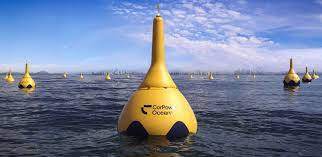
New research has suggested that wave energy could play a crucial role in decarbonizing the steel manufacturing industry. The study - assessing wave energy’s value for decarbonizing the steel industry - conducted by CorPower Ocean, Instituto Superior Técnico de Lisboa, and a global green steel manufacturer, highlights how wave energy will positively impact the creation of green hydrogen to make green steel.
Traditionally, steel is made from iron ore with coke, a fossil fuel, in a blast furnace at high temperatures. However, green steel is created using green hydrogen. Green hydrogen is currently the only solution to decarbonize hard-to-abate sectors, such as steel, cement, and the chemical industry, which cannot readily be electrified. Its production requires electrolysers to split water into oxygen and hydrogen using renewable energy.
The recent academic study focused on the running requirements of a 1GW electrolyser at a potential European green steel production facility, for 90% of the year. More than 800 simulations were performed calculating the optimised installed capacity of renewable energy, as well as purchases and sales to the grid. The study concluded that combining complementary renewable energy sources such as land-based wind and solar with ocean-based wave power led to a more stable and consistent power source to create green hydrogen. This meant significant reductions could be achieved in installed capacity required and cost of energy.
When only using solar and wind energy, the need to cover 90% demand resulted in an energy system of 8.4GW. By comparison, when adding 1GW of wave energy into the mix, the installed capacity required was reduced by 46% to 4.5GW. The model was based on prices for 2030 where wave energy as a novel technology was set at more than double the LCOE compared to solar and wind. The findings show that introducing wave energy can help to half the requirement of installed capacity production and lower the cost of energy by 26%.
In Europe alone, the annual steel energy demand sits at 300TWh per year. The European Parliamentary research service has stated that producing the necessary amounts of hydrogen for a full decarbonization of the steel industry would require an increase in electricity production of the order of 20%. Between 2020 and 2021, the global hydrogen market was valued at $130 billion and is estimated to grow more than 9% per year through 2030. However, more than 95% of current hydrogen production is fossil-fuel based.
Anders Jansson, Head of Business Development at CorPower Ocean, said that the report “proves once again how important wave energy is for future energy systems. Even though this was focused on a 1GW system, we see the same results from national and interconnected energy systems.”